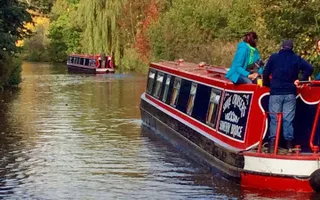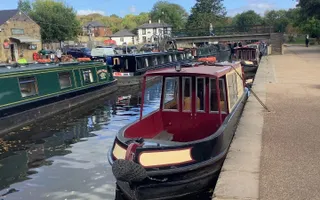These issues are developed in more detail in the Feasibility section. Here we concentrate on simple guidelines and actions that could save you time and expense down the line.
New marinas - getting started
The purpose of this section is to give you basic guidance about identifying a potential site and what issues to consider.

Getting to know the waterways leisure market
If you're new to the waterways, familiarise yourself with the sector. Our website is a good starting point, along with the British Marine Federation and the monthly specialist consumer press. 'Waterways World' and 'Canal Boat and Inland Waterways' magazines are available in most newsagents.
Our moorings section includes a searchable database of mooring sites, some of which show prices, and our terms and conditions for long-term moorings.
Download this handy guide for early, basic guidance about identifying a potential site and the things you need to consider.
Searching for a suitable site
Demand varies regionally. If you already have a site in mind, check its situation within our waterway network. Locations with a good choice of cruising routes are generally more popular than those at the end of the line.
If the lock-free cruising from the site is limited to less than 1km it's likely to create difficulties in water control and management. Sites located towards the end of a canal may also create difficulties in conveying the water from the supply source down to the area of increased demand. However, we will assess the suitability of the location when you contact us.
Marinas that require a connection to be made 'through' our towpath will need to provide a towpath over-bridge and associated infrastructure, including access ramps on either side. This can add a significant cost to your scheme.

Planning designations and site constraints
Contact the Local Planning Authority (normally the local council) and check the Development Plan. Walk over the site to survey its main physical attributes and do some simple research of websites and local plans to identify any obvious physical constraints, such as major utilities, pylons, pipeline markers, trees, etc.
Contact Natural England to check whether the site is in a location that may affect a Site of Special Scientific Interest (SSSI) or Special Area of Conservation (SAC) or similar. This may impact significantly on your scheme.
Assessing potential revenue and viability
An estimation of the gross revenue potential of the site can be calculated by multiplying the potential gross mooring capacity by the potential mooring rate.
How many boats could it accommodate? Moorings are usually charged by length rather than berth. The average length of boat on our network is 13m, but this varies regionally. If you're close to a river navigation, you're likely to attract an above average proportion of cruisers compared to narrowboats, and cruiser lengths are generally shorter.
The mooring fee you may be able to achieve depends on how attractive the location is to boaters and on the scale and quality of services you offer. Check the waterways press or our moorings section for a guide to prices in your region.
Hire boat allocation
If hire boat allocation is approved in the review of your expression of interest proforma, water resource will be agreed. Hire boat allocation must be used within 24 months of the commencement date of the Network Access Agreement date by submitting a business licence application. After this date we will require you to make a separate application should you wish to operate hire boats this location.
Details of how to submit a business licence application can be found in our boating business section.

Road access
Access to the nearest public highway can be a significant cost. Initial discussions with Highways England or the Local Planning Authority should provide an early indication of whether road access will be permitted and whether highway improvements will be required. They are likely to be concerned about the impact of your customers' cars on local roads.
Utilities
The cost of connecting to local services is likely to be a major cost, as well as diverting any services that may cross the site. You may also need to upgrade the capacity of existing services on site.
Contact the local utility offices or arrange for a specialist surveyor to identify the necessary connections, diversions and costs.
Safety
Under the Construction Design and Management (CDM) Regulations 2007, specific legal duties are placed on clients of construction projects. Contact the Health and Safety Executive for further information.
Facilities
Boaters require a minimum standard of facilities, such as pump out, elsan disposal, water supply and refuse disposal. Think about how you would be able to provide these facilities at the site and make sure you include details of your plans in your application.
Last Edited: 29 January 2025


Stay connected
Sign up to our newsletter and discover how we protect canals and help nature thrive


